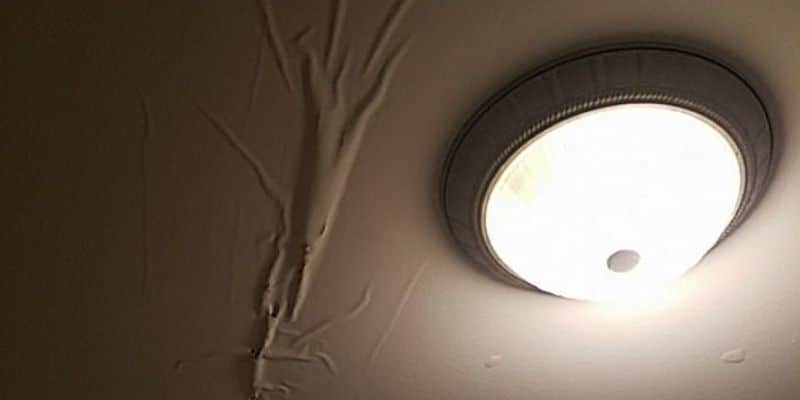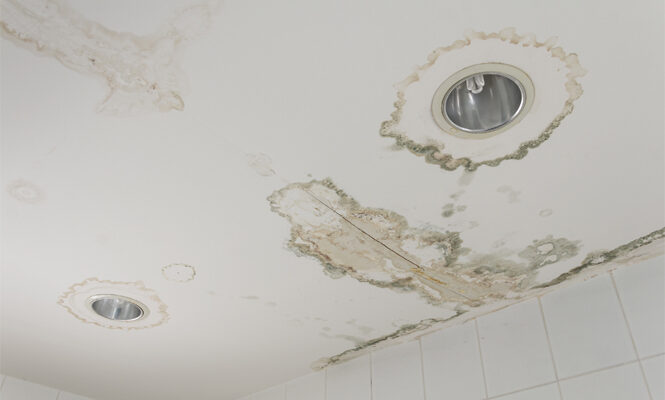We've noticed this great article about How to Remove Water Stains from Walls and Ceilings directly below on the net and decided it made sense to discuss it with you on this page.

Water spots on walls are not positive to the eyes. Sometimes it seems almost unavoidable to experience water spots on walls in houses.
Home owners living in humid areas continuously deal with the fear of water discolorations on wall surfaces. With exact as well as all-around information on the causes of water stains and also prompt repair service procedures, you will constantly be an action ahead of such events.
3 Typical Causes of Water Discolorations on Walls
Contrary to popular belief, water stains on walls do not constantly stem from bad structure products. There are a number of sources of water spots on walls. These include:
Moist
When hot damp air meets completely dry cool air, it triggers water droplets to form on the walls of buildings. This happens in restrooms and cooking areas when there is heavy steam from food preparation or showers. The water droplets can tarnish the surrounding walls in these parts of your house and infect various other areas.
Moist or condensation influences the roofing system and wall surfaces of structures. When the wall is wet, it develops an ideal environment for the development of microbes and also fungis.
Poor Drain
This will certainly protect against water from permeating right into the walls. This links to excessive wetness that you notice on the walls of your building.
So, the leading reason for wet walls, in this case, can be a bad drain system. It can also be due to inadequate management of sewer pipelines that run through the building.
Pipeline Leaks
Many houses have a network of water pipes within the walls. This makes certain that the pipelines are faraway from the reach of harmful rodents. It constantly boosts the practicality of such pipelines, as there is little oxygen within the wall surfaces. This discourages corrosion.
Yet, a downside to this is that water leakage influences the wall surfaces of the building and also creates extensive damages. A telltale sign of defective pipes is the appearance of a water tarnish on the wall surface.
Pro Suggestion
A houseplant in your home additionally boosts its humidity. If the residence is currently moist, you might want to introduce houseplants with marginal transpiration. An example of suitable houseplants is succulents.
Water Spots on Wall: Repair Work Tips
Property owners would typically want a quick fix when dealing with water spots. They would quickly understand this is detrimental as the water discolorations persist. Below are a few handy tips that will certainly guide you in the repair service of water stains on walls:
Conclusion
Although nobody wishes to have water discolorations on walls in their house, it can take place to the most effective people. This post offers you leverage, as you currently recognize just how to handle this problem if it does take place.
It is constantly best to hire expert solutions to aid take care of the problems in your house.
Occasionally it appears virtually unpreventable to experience water stains on walls in homes.
In contrast to preferred belief, water discolorations on walls do not constantly stem from bad building materials. There are several causes of water stains on walls. The water beads can tarnish the bordering wall surfaces in these parts of your home and spread to various other locations.
Below are a couple of practical ideas that will certainly lead you in the repair service of water spots on walls:
CHECKING FOR WATER DAMAGE
Water damage can be costly, and it may begin before you even notice the first signs of trouble. Water damage can cause mold and mildew in your walls and floors, which can create an abundance of health concerns for your family. It can also lead to costly repairs of various appliances and general home fixtures. To avoid the pricey consequences of water damage, here are Warner Service’s top 5 places you should check:
The walls – The easiest place to spot the beginnings of water damage is on the walls and ceilings of your home. If water damage is present, there will most likely be water stains, especially around the windows and doorframes, and/or cracks in the drywall. If a stain looks unusual (discolored to brown, black or gray, raised texture), has a swollen appearance or is soft to the touch, contact a professional immediately. The pipes – To avoid water damage, consistently check the pipes in your kitchen (especially the dishwasher and ice maker), bathrooms, laundry room (specifically washing machines) and basement for corrosion, leaks and water stains. Pay special attention to where the pipes connect in your home and the location of caulking around the bathroom fixtures, including toilets, sinks, showers and tubs. Missing or loose caulking and grout could be signs of leaking water. This seepage can also quickly cause mold and rust, so double check your water heater and tank for wet spots on the floor. The floor – Water damage is very easy to spot on the floor. Look for any warping or buckling of the material, especially in the basement. If your home has wood flooring, look for bright white or dark stains. If your home has carpeting, keep it dry and clean. A damp carpet that smells of mold could cause water damage and health problems. To avoid this, consider installing floor pans under your appliances to help prevent damages from small, slow and undetected leaks. The basement and attic – If your basement or attic smells odd check for mold and mildew around the area, especially the valley where the roof meets. While you are inspecting those areas, check for wall cracks, floor stains, rust and dampness in the insulation. If you live in a colder and/or rainier climate, perform routine checks for water damage from melting snow or ice and rain. The exterior – Check the roof for damaged flashing and missing, cracked or curled shingles. There should also be no standing water anywhere outside your home. This could be caused by puddles, leaky rain gutters or hoses, poor drainage, or short gutter spouts. Invest in a sump pump system or water flow monitoring system, and perform routine maintenance on these outdoor appliances to avoid indoor water damage.

Hopefully you enjoyed our excerpt about Indicators of Water Damage Behind Walls. Thanks a lot for taking time to browse our short article. So long as you enjoyed our post plz be sure to share it. Thanks so much for going through it.
Search-end for emergency plumbing.